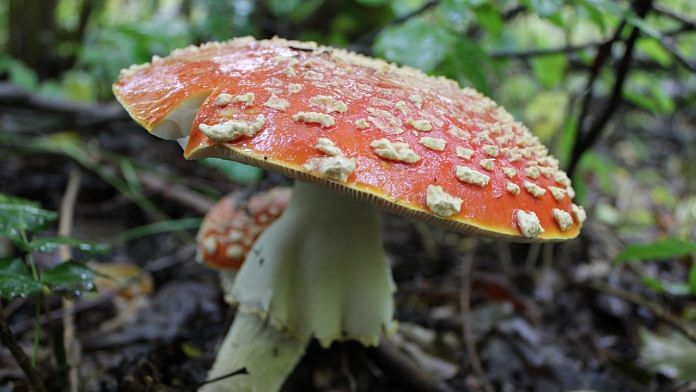Bengaluru: What’s common between a blue whale, human beings, fungi and a tree? Despite the differences they share, their growth is guided by the same principle, a study has suggested.
The study, the most extensive of its kind, was carried out by Ian Hatton, an ecologist at ICTA-UAB in Barcelona, and his colleagues, who sought to investigate this exact universal pattern of growth.
Their research was published last month in the Proceedings of the National Academy of Sciences of the United States of America, a peer-reviewed, multi-disciplinary journal.
By bringing together data for thousands of species, they found that the most basic features of life, like metabolism or mortality, followed a consistent pattern in certain groups of species like mammals.
Growth, however, seemed to follow a remarkably simple and universal law across the board, in all species of eukaryotes, the group that includes all animals, plants, fungi and almost everything made from large, complex cells — all the living things that we can actually see.
“It’s astounding how everything seems to follow the same growth law,” Hatton told ThePrint.
Also read: Gene editing might alter our DNA, but at the cost of our humanity
Upturning current knowledge
By bringing together such large-scale data for thousands of species, the researchers were able to test some basic principles of metabolic theory, the most prominent theory in the field of ecology.
The premise of the theory is that an organism’s metabolism is the bedrock that underpins other features like its body size, speed of growth etc. This implies that metabolism and its limitations determine how an organism functions.
But that might not be the case. When the researchers studied how different eukaryotic species grow in comparison to their body weight, they found a robust universal pattern.
“Across different species, life stages and levels of organisation, we’re seeing the same pattern emerge over and over,” said Hatton.
When they looked at metabolism, they found multiple patterns. This inconsistency, Hatton said, “rules out the possibility of a universal underlying process for metabolism”.
If metabolism is not the foundational feature underpinning life, then what is? According to Hatton, it might be growth, given that all organisms seem to follow a single law in growth.
This claim gets further support from a peculiar observation. Factors that limit the growth of an organism, also slow down its metabolism. But according to the study, the reverse isn’t true, which clearly points out the foundational nature of growth.
While the theory itself has been proposed before, Hatton and his team have presented the first piece of convincing evidence to prove it, experts said.
“Even though this idea isn’t new, it’s the first convincing work showing that,” said Jean-Michel Gaillard, an ecologist at the University of Lyon who wasn’t involved in the study.
Also read: World’s largest study on newborns with brain injuries begins in India
What lies beyond
This kind of studies, which find patterns across different life forms, aren’t new. They have been known for almost a century, but they have remained highly debated.
Most of the criticism, according to Gaillard, likely stems from “myopic analyses” within small groups of species. But with the availability of ‘big data’, these universal patterns that cut across all sophisticated life become clear.
“Finding the same relationship across mammals, plants and birds means something,” said Gaillard, “And at this scale, they are really able to capture the big picture.”
However, Gaillard thinks there is more to this story. All organisms, from birth to death, follow a specific sequence of events, like maturation, reproduction, ageing etc.
According to Gaillard, the timing of these events, also known as the biological time, differs greatly from species to species and is a crucial piece of the puzzle. “They only consider the rate of growth, but of course, the growth period [time] is important too.”
For example, a mouse and an elephant will have drastically different time spans for when they reach adulthood, and this difference has a crucial role to play, said Gaillard.
The fact that there is one blanket law for growth across all eukaryotes points to some general boundaries within which life exists.
These boundaries, according to Gaillard, have something to do with biological time. Future work that incorporates biological time in the mix “would provide a more cohesive understanding of variation and how life grows”, he added.
Beyond ruffling existing academic theories, the study alludes to a larger profound question.
Every eukaryote that we see in its current form is a spectacle of millions of years of its unique evolutionary past. Yet, every fig and fungus, ant and antelope, human and animal, essentially grow the same way. Why is that so? The question points to some fundamental process at the heart of life, whose understanding remains elusive for now.
Pratik Pawar is a science journalist currently based in Bengaluru. He is a recipient of the S. Ramaseshan science writing fellowship and can be found on Twitter at @pratikmpawar.
Also read: Noise pollution threatens survival of over 100 species globally, warns new study



